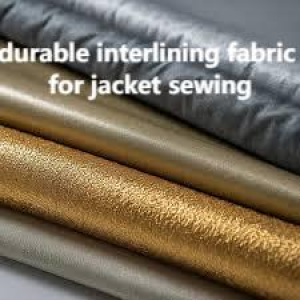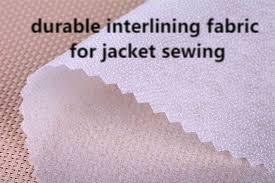In today’s fashion and textile industry, Interlining plays a crucial role in determining the final quality and comfort of garments. Designers and manufacturers recognize that interlining is not merely a supportive layer but a material that can transform the look, feel, and durability of clothing. By choosing the right type, thickness, and composition, garments can achieve improved shape retention, enhanced texture, and prolonged life. Understanding the strategic applications of these inner layers allows manufacturers to balance aesthetics, functionality, and cost-effectiveness effectively. This article explores how careful material selection, modern production techniques, and innovative finishing can significantly elevate garment quality.
Understanding Fabric Support and Structure
A garment’s structure is heavily influenced by the layers beneath its outer fabric. Quality inner layers provide essential support, maintaining shape and reducing wear over time. Fabrics prone to stretching or distortion particularly benefit from well-engineered supportive layers. Techniques such as fusing or sewing inner layers into the garment enhance stability without compromising softness. Moreover, different fiber types impact the overall tactile experience, allowing designers to fine-tune the garment’s drape and resilience.
Material Selection and Durability
Selecting the appropriate materials is critical to ensuring durability. High-quality inner fabrics resist shrinkage, wrinkling, and deformation, preserving the garment’s integrity throughout repeated use. Manufacturers often consider blends of synthetic and natural fibers to achieve a combination of elasticity, firmness, and breathability. Additionally, the density and weave of the supporting layers influence longevity. A carefully chosen inner layer can reduce stress on seams, prevent sagging, and maintain crisp lines, even after multiple washes or extensive wear.
Comfort and Wearability
Comfort is a key consideration in garment design. Inner layers that are too rigid may create discomfort, whereas overly soft layers might fail to provide adequate support. Balancing these factors ensures garments remain pleasant to wear while keeping their intended form. Advanced finishing methods, such as soft coating or heat treatment, can improve softness without sacrificing functionality. Properly engineered inner layers also enhance ventilation and moisture management, making clothing more suitable for various climates and activities.
Innovations in Textile Technology
Modern technology has introduced materials with unique properties, such as memory fabrics, lightweight stabilizers, and breathable synthetic blends. These innovations enable designers to craft garments that retain their original shape, resist wear, and remain lightweight. Automated production techniques allow precise placement and fusion of inner layers, resulting in consistent quality across large-scale manufacturing. Through careful integration of new materials and methods, garment manufacturers achieve superior performance while reducing defects and waste.
Sustainability and Eco-Friendly Choices
Environmental responsibility is increasingly influencing material selection. Recycled fibers and biodegradable components reduce the ecological footprint of clothing production. By optimizing the use of durable inner layers, garments have longer lifespans, decreasing the need for frequent replacement. This approach aligns with modern sustainable practices, catering to eco-conscious consumers who value quality and environmental impact equally. Integrating sustainable materials also supports brand reputation and meets regulatory standards in global markets.
In conclusion, strategic material choices and thoughtful engineering of garment layers lead to enhanced performance, durability, and comfort. Manufacturers who invest in understanding these aspects produce clothing that stands out in quality, aesthetics, and functionality. For further insights on the types, applications, and advantages of interlining, visit https://www.interlining-factory.com/news/what-is-interlining-types-applications-and-more.html


